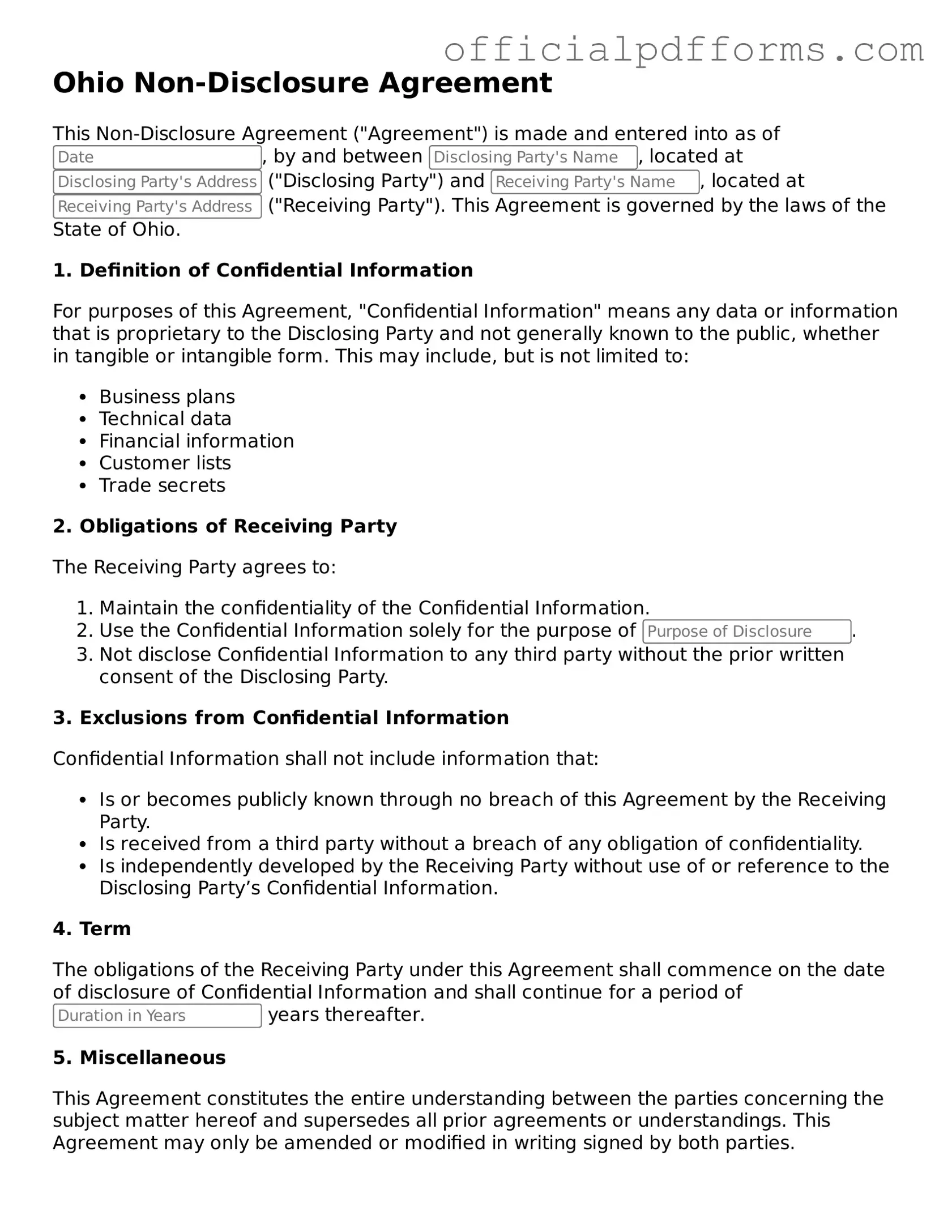Printable Ohio Non-disclosure Agreement Template
A Non-disclosure Agreement (NDA) in Ohio is a legal document that protects sensitive information shared between parties. This form helps ensure that confidential details remain private and are not disclosed to unauthorized individuals. If you need to safeguard your proprietary information, consider filling out the NDA form by clicking the button below.
Access Form Online
